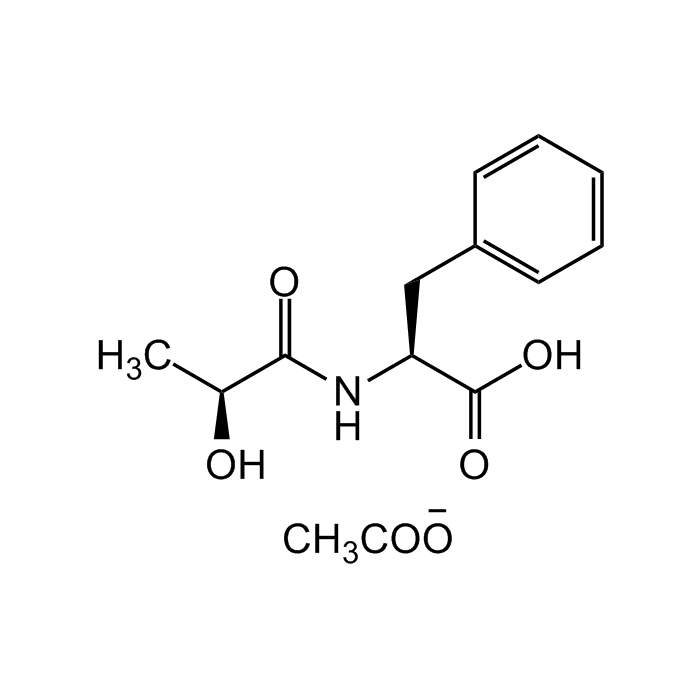Cookie Policy: This site uses cookies to improve your experience. You can find out more about our use of cookies in our Privacy Policy. By continuing to browse this site you agree to our use of cookies.
AdipoGen Life Sciences
Lac-Phe . acetate
As low as
120
CHF
CHF 120.00
In stock
Only %1 left
AG-CR1-3545-M01010 mgCHF 120.00
AG-CR1-3545-M05050 mgCHF 480.00

| Product Details | |
|---|---|
| Synonyms | N-Lactoyl-L-phenylalanine |
| Product Type | Chemical |
| Properties | |
| Formula |
C12H15NO4 . C2H4O2 |
| MW | 237.3 . 60.1 |
| CAS | 183241-73-8 |
| Purity Chemicals | ≥95% (HPLC) |
| Appearance | White to off-white powder. |
| Solubility | Soluble in water. |
| InChi Key | TXEKHKMVDUMVBF-GNAZCLTHSA-M |
| Smiles | C[C@H](O)C(N[C@@H](CC1=CC=CC=C1)C(O)=O)=O.CC([O-2])=O |
| Shipping and Handling | |
| Shipping | AMBIENT |
| Short Term Storage | +4°C |
| Long Term Storage | -20°C |
| Handling Advice |
Keep cool and dry. Protect from light and moisture. |
| Use/Stability | Stable for at least 2 years after receipt when stored at -20°C. |
| Documents | |
| MSDS |
 Download PDF Download PDF |
| Product Specification Sheet | |
| Datasheet |
 Download PDF Download PDF |
Description
- Lac-Phe is an exercise-inducible metabolite, also called exerkine, that suppresses feeding and obesity. Lac-Phe is increased heavily with exercise in mammals and acts to reduce food intake and potentially decrease overall body weight and fat mass.
- In diet-induced obese mice, pharmacological administration of Lac-Phe led to decreased food intake, adiposity and body weight, as well as improved glucose homeostasis, while movement and energy expenditure were not affected.
- The biosynthesis of Lac-Phe from lactate and phenylalanine occurs in CNDP2+ cells, including macrophages, monocytes and other immune and epithelial cells.
Product References
- An exercise-inducible metabolite that suppresses feeding and obesity: V.L. Li, et al.; Nature 606, 785 (2022)
- Exerkines in health, resilience and disease: L.S. Chow, et al.; Nature Review Endocrinol. 18, 273 (2022)
- An exercise-induced metabolite alters feeding: C. Greenhill: Nature Review Endocrinol. 18, 521 (2022)





